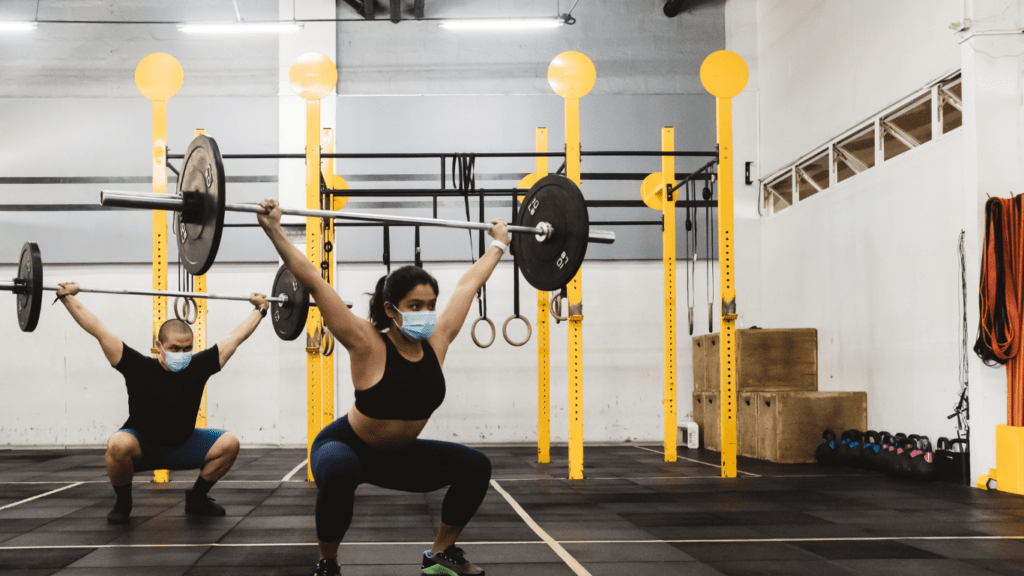Understanding Weightlifting Basics
Weightlifting serves as a foundational activity to build muscle strength, improve endurance, and boost metabolic health. It’s essential to grasp basic principles to ensure safe and effective practice.
First, correct form plays a critical role in preventing injuries. For instance, a neutral spine and engaged core reduce strain on the lower back.
Second, starting with manageable weights establishes baseline strength without overtaxing muscles. Incremental progression in weight and intensity strengthens muscles without causing fatigue.
Third, balance between compound and isolation exercises enhances both muscular coordination and specific muscle targeting. Squats and deadlifts engage multiple muscle groups, while bicep curls focus on individual muscles.
Recognizing the importance of rest and recovery is crucial, as muscles grow stronger during rest periods following training. Sufficient sleep, hydration, and nutrition support muscle repair and growth. Engaging in a proper warm-up increases blood flow, heats muscles, and prepares the body for more strenuous activities. Including dynamic stretching, such as leg swings and arm circles, can mobilize joints effectively.
Lastly, consistency in lifting helps achieve long-term results, with regular routines establishing habits. Monitoring progress through maintenance of records or journals allows for tracking improvements and adjustments. This adherence secures continuous development and aligns with specific fitness objectives. Understanding these basics provides a strong foundation for any weightlifter aiming to enhance their performance safely and effectively.
Importance of Safety in Weightlifting
Prioritizing safety is crucial for effective weightlifting. Understanding safety measures reduces the risk of injuries and enhances long-term progress.
Proper Equipment and Gear
Quality equipment and gear lay the foundation for safe weightlifting sessions. Investing in durable items protects against injury and promotes effectiveness.
- Footwear: Wearing stable and supportive shoes ensures proper balance. Avoid sandals or running shoes as they lack adequate support.
- Clothing: Opt for comfortable and breathable workout attire. Tight-fitting clothes can restrict movement, increasing the risk of strain.
- Weight Belts: When used correctly, weight belts provide support during heavy lifts. They stabilize the core and reduce the likelihood of back injuries.
Spotting Techniques
Spotting techniques play a vital role in safety. An attentive spotter can prevent mishaps and assist in achieving new lifting goals.
- Communication: Clear communication between lifter and spotter ensures alignment on lifting and safety cues.
- Positioning: Stand close enough to assist but not hinder. Proper positioning allows for immediate intervention if needed.
- Focus: Spotters should maintain focus on the lifter at all times. Distractions increase the chances of accidents.
By adhering to these safety practices, weightlifters can minimize risks and achieve their performance objectives effectively.
Effective Weightlifting Techniques

Effective weightlifting involves mastering precise techniques to ensure safe and successful performance. These techniques range from maintaining the right form to implementing proper breathing methods for optimal results.
Correct Form and Posture
Maintaining the correct form during weightlifting prevents injuries and maximizes muscle activation. Ensure feet shoulder-width apart for stability before beginning any lift.
Engage core muscles for support, especially during heavy lifts. Keep back straight and aligned with the neck to avoid unnecessary strain. When performing squats, for example, push through the heels and keep knees behind toes to maintain balance and protect joints. Consistently focusing on correct posture reinforces muscle coordination and strength over time.
Breathing Techniques
Proper breathing enhances performance and energy levels during lifting. Inhale deeply through the nose before beginning each lift to oxygenate muscles.
Exhale forcefully through the mouth during the exertion phase of the lift to maintain power and prevent dizziness. For example, during a bench press, inhale on the downward motion and exhale as you press the weight upward. Controlled breathing maintains focus and stabilizes the body, contributing to better lifts and overall efficiency.
Designing a Weightlifting Routine
Crafting a weightlifting routine involves aligning one’s goals with effective practices. By targeting diverse muscle groups, individuals can create balanced and safe workouts.
Warm-up and Cool Down
Integrating proper warm-ups and cool downs is crucial in any weightlifting routine. Starting with dynamic stretches, like arm circles and leg swings, increases blood flow and prepares muscles for the demands of lifting. These movements reduce injury risk by loosening joints and enhancing flexibility. Conversely, ending with static stretches, such as quad holds and hamstring stretches, aids recovery. These stretches help release tension, promote muscle relaxation, and prevent post-exercise stiffness.
Balancing Different Muscle Groups
A well-rounded routine addresses all major muscle groups to prevent imbalances. Focusing on both push and pull exercises, like:
- bench presses
- bent-over rows
ensures comprehensive muscle development. To optimize muscle engagement, alternate between upper and lower body workouts, such as squats and shoulder presses, across sessions. Including compound and isolation exercises helps target specific muscles, ensuring each group works efficiently and symmetrically. This balance fosters overall strength and reduces the risk of overworking specific areas.
Nutrition and Recovery
Nutrition and recovery are critical components for safe and effective weightlifting. I optimize my performance by focusing on hydration, proteins, and supplements.
Importance of Hydration
Hydration affects not only muscle function but also energy levels during weightlifting. By staying hydrated, I maintain endurance and reduce the risk of cramps or fatigue. Drinking water before, during, and after workouts keeps my body functioning optimally. I incorporate electrolyte-rich drinks if my sessions are particularly intense or last over an hour, which helps replenish essential minerals lost through sweat.
Role of Protein and Supplements
Proteins are the building blocks for muscle repair and growth. I ensure adequate protein intake by including lean meats, fish, and plant-based sources in my diet. Aiming for at least 0.8 grams of protein per pound of body weight supports my muscle synthesis and recovery needs. For additional support, I consider supplements like whey protein to meet daily protein goals conveniently. Creatine and branched-chain amino acids (BCAAs) also enhance muscle endurance and recovery, but I use them based on careful consideration of my individual needs and goals.
Tracking Progress and Setting Goals
Tracking progress and setting goals are essential for sustained weightlifting success. I focus on measurable milestones that reflect my performance and growth over time. Keeping a detailed training log helps me monitor my weight lifted, reps, sets, and rest periods, enabling a clear understanding of improvements. This log acts as a valuable reference to adjust my routines and challenge myself as needed.
When setting goals, I prioritize specificity and attainability. Instead of vaguely aiming to “get stronger,” I set clear targets, like increasing my squat by 10 pounds over the next month. This approach motivates me to achieve incremental growth, making the overall process more manageable and rewarding.
Regular assessments help me align my goals with reality. I evaluate my form and technique with video recordings and feedback from a knowledgeable coach or training partner. These insights allow me to identify weaknesses and hone my skills, contributing to safer and more effective training.
Tracking consistency improves focus and results. By diligently recording workouts and setting achievable goals, I remain motivated and informed about my weightlifting journey, ensuring continuous progress and reduced risk of plateaus.

 Kirstiella Wagnerson’s expertise in sports psychology has been a cornerstone of Make Athlete Action, where she has contributed valuable insights into the mental aspects of athletic performance. Her knowledge of motivation, focus, and mental resilience empowers athletes to overcome challenges and reach their goals. Kirstiella’s engaging content on mental toughness and motivation offers readers practical strategies to boost their mindset, helping them stay motivated and focused. Her dedication to the psychological well-being of athletes has made Make Athlete Action a comprehensive platform for both physical and mental fitness.
Kirstiella Wagnerson’s expertise in sports psychology has been a cornerstone of Make Athlete Action, where she has contributed valuable insights into the mental aspects of athletic performance. Her knowledge of motivation, focus, and mental resilience empowers athletes to overcome challenges and reach their goals. Kirstiella’s engaging content on mental toughness and motivation offers readers practical strategies to boost their mindset, helping them stay motivated and focused. Her dedication to the psychological well-being of athletes has made Make Athlete Action a comprehensive platform for both physical and mental fitness.